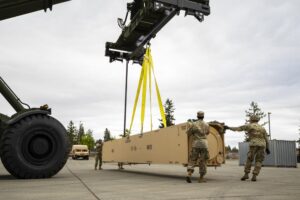
The Pentagon’s lead technology official on Tuesday said she wants to make hypersonic weapon systems more affordable, and added she believes the Army’s push to field an initial operational capability in 2023 is a realistic goal. Heidi Shyu, the new under secretary of defense for research and engineering, told reporters during a press briefing at the Association of the United States Army conference she wants to work with industry on driving down the costs for developing and building the new…

 By
By 











